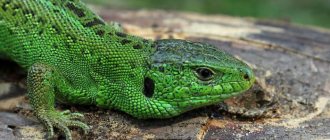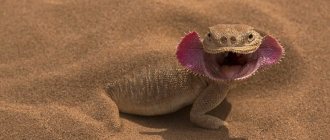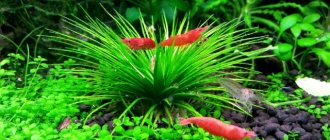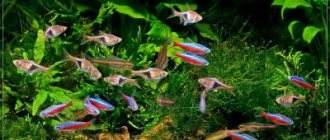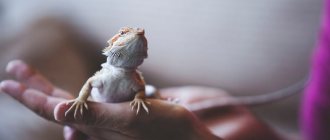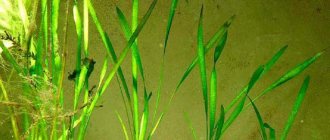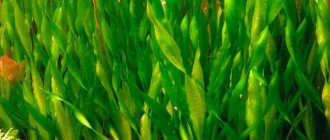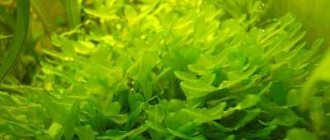Bearded dragon. Estersinhache fotografía/Getty Images
Today there are about 5,000 species of lizards on the planet ().
This group of reptiles includes tiny species such as the dwarf gecko, which can fit on the tip of a finger, as well as much larger species such as the 3-meter Komodo dragon. Most species of lizards eat insects, although some also eat plants, and the largest ones eat small mammals. Although lizards are popular pets, you probably already know that not all species make good housemates. Some species are poisonous, and many require difficult living conditions.
If you're looking for a pet lizard, it's important to choose from a group that is friendly, fun to watch, and (at least moderately) easy to care for. Here are some of our favorite lizard species to keep at home.
Iguanas
Iguanas look much larger in comparison with geckos: an annual individual reaches a size of 25 centimeters, and an adult – 70 centimeters. In this case, 3/4 of the entire length is the tail.
You can also recognize an iguana by its relatively small head and a pouch in the throat area, typical for this type of reptile. These reptiles are quite peaceful and make good contact with people.
Over time, iguanas become accustomed to activities such as bathing or feeding. They also often pass the time by sitting on the shoulder or arm of their owner.
It is very important that the reptile is given enough attention. In the wild, these lizards live on average 8 years, but at home this figure increases to 20 years.
Chameleons
This is one of the most mysterious and unusual species of reptiles, known for its ability to camouflage. The size of lizards varies from 3 centimeters to more than half a meter.
It is not difficult to recognize a chameleon externally: it has an elongated head, long limbs with claws, and a long tail twisted in the form of a spiral, which chameleons often use to anchor themselves on a tree.
Males have small horns or tubercles on their heads - this is sexual dimorphism. The eyes of these reptiles are ellipsoidal in shape and are in constant motion along the axis.
There is probably no question about what such lizards eat at home.
The chameleon's favorite delicacy is flies, so don't forget to let the chameleon out to hunt or place a plate of fruit closer to the cage to attract insects.
Corn snake
One of the most common species among beginners. It takes root well and is bred in captivity, produces offspring, and is easy to care for.
The snake is small in size - it is rarely more than one and a half meters long. An important feature is that the pet will feel good at different temperatures, and the humidity requirements are also low. This is important because new breeders often have difficulty creating a comfortable environment.
Young individuals can be kept in compact terrariums measuring 30*30*30 cm. Adults are kept in terrariums measuring 60*45*30 cm. It is important to consult with our specialists and choose a place of detention from which the reptile cannot escape. These snakes are famous for the fact that they can get out even from a locked terrarium if loopholes are left for them.
Content requirements include:
- Dividing the terrarium into a cold zone with a temperature of 21-24 degrees and a warm zone with warming up to 28-30 degrees.
- The right substrate. Snake Bedding primer is best. It does not generate dust, is soft, absorbs odors and retains heat. Snakes like to burrow into it.
- Calibrated nutrition. A regular mouse once a week will do. Drinking water must be present in the terrarium at all times.
Snakes feel good in the hands and quickly get used to their owners. This is a versatile option as a first reptile.
bearded dragon
An exotic reptile whose size can reach up to 50 cm; the agama needs to create decent conditions in the form of a terrarium with a volume of at least 200 liters; The average lifespan of this species is 10 years.
Organization of the terrarium
An exotic pet should only be kept in a terrarium. A lizard roaming freely around the house can get injured or burned.
The sizes and shapes of the terrarium can be any, but there is an unwritten rule: the height of the walls of the artificial dwelling must be equal to the length of the amphibian multiplied by 2. At a minimum. Let us remind you: lizards easily climb even a vertical wall.
The material for the terrarium can be ordinary glass (an old aquarium will do just fine), but it is better to make a lifting lid from wire mesh. In addition, small holes for ventilation need to be installed in the side walls.
There are options for a “house” made from an old bookshelf. In this case, one side wall and the lid of the improvised terrarium are also made of wire mesh.
It is recommended to cover the bottom with soil; Coarse sand, pebbles and even ordinary soil are perfect for this. The most popular among terrarium keepers are ordinary napkins, paper towels or toilet paper, which can be easily replaced when soiled.
For your agile pet, it would be a good idea to decorate the landscape with branches or tree stumps, snags, stone slides, and caves. The nimble lizard will definitely like this decor.
Skinks
This is the largest family of lizards, numbering more than 100 genera and 1.5 thousand species. Therefore, in this family you can find specimens of both bright colors and discreet modest ones.
There is the same spread in the size of different representatives of skinks: some barely reach 10 centimeters in length, others reach 70 centimeters.
They are all quite unpretentious, calm, and love privacy.
Agamidae
In this family you can find arboreal lizards, terrestrial and aquatic species. They also differ in diet. Among agamas there are both carnivores and plant eaters.
Everyone will need to create appropriate conditions for which they are quite demanding.
Pet dragons
This is what iguanas could be called for their appearance and size. This is a relatively large species of reptile, some of them can reach a length of one and a half to two meters. They have a stern and slightly frightening appearance.
But at the same time, arboreal iguanas only eat plants, which makes their maintenance easier. Due to their origin from hot countries, tropical forests, they are quite demanding on temperature conditions.
Geckos
These are small, but very active and funny lizards. Thanks to the special design of their legs, they can run on any surface - from floor to ceiling.
Another feature of geckos unique to lizards is the ability to communicate not only through tail flapping, but also through sounds.
Difference from other reptiles
Lizards are characterized by an elongated body. The coloring is often combined from several colors. Many species have the ability to camouflage themselves in their environment. This is especially successful for reptiles living in the desert.
There are many species of lizards that are very similar to snakes. This mainly applies to the legless. Characteristic features:
- Lizards have normal eyelids, while snakes have fused eyelids.
- Snakes are completely deaf, unlike lizards, which have ears.
Lizards can be confused with newts.
They are very similar and are close relatives. Lizards can also be confused with newts. They are very similar and are close relatives among reptiles. However, there are fundamental differences:
- In lizards, the skin consists of scales, but in the newt it is completely smooth and covered with mucus.
- The newt can breathe through its gills and skin.
Their main difference is that the newt cannot throw off its tail if it is in danger. The principle of dropping the tail is quite simple. It contains a lot of soft cartilage, which can be easily broken by strong muscles. At the same time, the blood vessels constrict, thereby reducing blood loss to a minimum. The new tail can take up to nine months to grow. Sometimes malfunctions occur in the body. Then not one, but two tails grow at once.
Blue tongue skink
If the snake becomes a good first snake, then everyone who dreams of lizards should try to get skinks. This is a rather expensive pet, but when answering the question of which reptile is best to get, our consultants often suggest it.
A terrarium of 90*45*30 cm is suitable for keeping an adult animal.
In nature, skinks constantly dig in the ground, looking for food. Therefore, inside the terrarium there must be a suitable, safe substrate for this. You can use an inexpensive substrate made from a mixture of sphagnum and bark.
Like snakes, such lizards require the creation of cold and warm corners with temperatures of 25-26 and 35-40 degrees in the cold and warm zones, respectively. You need to monitor temperatures using a thermometer. This lizard is active during the day, so an ultraviolet lamp must be placed in the terrarium. You also need to organize constant access to drinking water - it is poured into a low drinking bowl and placed in a cold corner.
Skinks are omnivores. They eat insects and plant matter, so you don't have to deal with mice. They are also easy to tame and eat specialized Repashy food.
Standard feeding requirements:
- For young people: we feed every day.
- For adults: food can be given twice a week.
Skinks need to be fed a variety of foods. When feeding, food is sprinkled with a special complex of vitamins and calcium.
Possible diseases of leopard geckos
Leopard geckos, like any other living beings, are susceptible to certain diseases that arise for a number of reasons.
The most common diseases of leopard geckos:
- Helminthiasis is infection by helminths. The pathology worsens with exhaustion and severe stress. Characteristic signs are refusal to eat, loose stools with a foul odor, and a decrease in the volume of the tail. Treatment is carried out with special anthelmintic drugs for lizards. It is also recommended to drink plenty of fluids to avoid dehydration.
- Rickets. The disease develops due to a lack of calcium in the body. An obvious sign is deformation and weakness of the legs; the lizard moves slowly and touches the ground with its belly. The treatment uses liquid calcium gluconate. Drops of the drug are instilled into the lizard's mouth every day for 2 or more months. Special foods containing calcium must be included in the diet.
- Fungal diseases in which grayish spots appear on the skin of the leopard gecko. Treatment is carried out only as prescribed by a doctor.
- Cryptosporidiosis is a very dangerous and practically incurable disease that affects the liver and causes the accumulation of large amounts of fluid in the abdominal cavity. With this disease, the lizard's tail noticeably loses weight, and a black spot appears on its chest. In this case, emergency assistance from a specialist is required.
- Unsuccessful molting, after which the lizard's tail becomes flabby and its tip dry. The problem can be solved simply: the diseased tail is carefully cut off, and the wound is treated with Miramistin spray or Chlorhexidine solution. This is not at all dangerous for the pet; it will soon grow a new and healthy tail.
That's all the most important thing you need to know about the rules of keeping and caring for leopard geckos. By following simple recommendations from experts, your exotic pet will live a long and happy life, delighting you with its interesting behavior and friendly disposition.
Equipment and climate control
Scenery
Of no small importance is the decoration of terrariums, bringing them closer to the natural views of a particular climate - corresponding to the natural ecosystem of the animals kept at home. Using decorated foam plastic, natural stones, bentonite, tree bark and other materials, micro-landscapes of a desert or forest, mountain range or plain, etc. are recreated.
Priming
Various artificial and natural materials are used for the soil of the terrarium: stone, sand, expanded clay, earthen mixtures, etc. - depending on the ecosystem of the terrarium and the animals kept in artificial conditions.
Plants
Depending on the type of terrarium, they are planted with live or artificial ornamental plants, made mainly of plastic that is neutral to various environments.
Temperature
A necessary condition for the normal functioning of poikilothermic animals is a certain environmental temperature. Preferred temperature varies among different animal species.
There are two conventional sections in the terrarium:
- Warm corner
(English
hot spot
), in which heating elements will be placed and where animals will increase their body temperature. The temperature in this area is higher than in the rest of the terrarium. - Cold corner
, in which the temperature is lower and the humidity is usually higher than in a warm corner.
The presence of two areas with different temperatures and humidity (as well as an intermediate zone) allows animals to choose the necessary environmental parameters themselves.
Heating of the terrarium can be done using:
- Thermal cords, which can be located both inside and outside the terrarium
- Thermostones
- Thermomats - flat heating elements
- Ceramic heat emitters
- Infrared lamps
- Incandescent and mirror lamps that combine heating and lighting functions
A thermometer is a necessary element of a terrarium, with the help of which temperature is monitored. It is necessary to install thermometers in the warm and cold corners of the terrarium. You can also use a thermometer combined with a hygrometer in a cold corner. A water thermometer is required in an aquaterrarium. [3]
Humidity
Another important factor, especially for amphibians, is humidity.
To maintain a certain humidity, the following are used:
- Sprayers, or sprayers, from which the soil, plants and walls of the terrarium are periodically sprayed
- Rain installations
- Fog generators
- Pump fountains
To measure air humidity, hygrometers or thermometers combined with a hygrometer are used. [3]
Lighting
Lighting for the terrarium is provided by incandescent lamps and/or LED and fluorescent lamps. Mirror reflector lamps with a power of 40 to 75 W provide local heating of a certain area of the terrarium, thereby creating hot and cold zones in the terrarium so that the reptiles can independently regulate their temperature by moving between these zones. To simultaneously illuminate and heat terrariums with nocturnal animals, you can use infrared lamps or simple incandescent lamps with a red or blue bulb, since red or blue light does not bother the animals. [3]
Ultraviolet irradiation
To produce vitamin D, regulate mineral metabolism, stimulate normal behavior and reproduce, many terrarium animals require ultraviolet irradiation.
Most reptiles and many amphibians require UV fluorescent lamps. Most lamps designed specifically for terrarium animals have a certain amount of ultraviolet in the spectrum. They are designed for constant illumination and irradiation of the terrarium. Based on their spectrum, such lamps can be divided into three groups:
- Lamps whose spectrum contains little hard UVB (2%). Designed for soft irradiation of amphibians, snakes and nocturnal lizards, as well as illumination of terrariums in combination with other lamps.
- Lamps in the spectrum of which the share of UVB is 4-5%. Designed for reptiles with a moderate need for ultraviolet radiation: from tropical rainforests and temperate latitudes.
- Lamps in the spectrum of which the share of UVB is 7-10%. They are intended for reptiles of arid zones (steppes and deserts), which have a high need for ultraviolet irradiation.
Erythema and quartz medical lamps can be used for session irradiation of animals. [3]
Ventilation
The terrariums are provided with ventilation holes and slits, draped with a fine mesh of metal and plastic, for the entry and circulation of fresh air.
Who should you choose as your first pet?
If you decide to get a reptile for the first time, you should consider a few simple recommendations:
- The corn snake is the most beginner-friendly snake.
- If you want a friendly and easy-going lizard, choose a bearded dragon.
- For small apartments where only a compact terrarium can be placed, the spotted leopard gecko is suitable.
- A beautiful and hardy lizard that is easier to care for than an agama and not so demanding in food is the blue-tongued skink.
We are ready to tell you in more detail about all types of pets in the store, as well as choose a terrarium, substrate, food and calcium supplements. We will develop the correct feeding schedule and answer all additional questions. You can learn more about options for beginners from our video.
